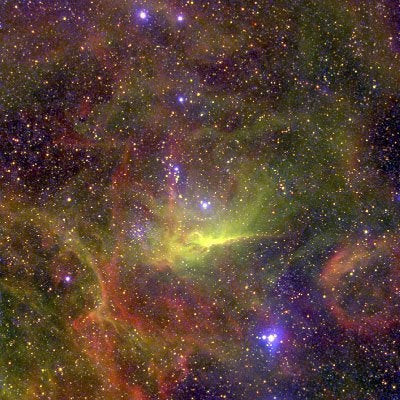In 1867, Wolf and Rayet observed an unusual pattern in the wavelengths of light emitted by certain stars. The pattern, or spectrum, indicated emission of light from helium. No one had seen this before.
Later, astronomers found the reason: A Wolf-Rayet star loses its outer hydrogen layers late in its evolution. This exposes elements heavier than hydrogen that are produced in the star’s core, including helium, carbon, oxygen, and nitrogen.
Wolf-Rayet stars are also notable for their powerful outflows, or stellar winds. These flows carry mass off the stars’ surfaces at speeds of up to 4.5 million mph (7.3 million km/h). In addition, Wolf-Rayet stars are extraordinarily hot, with surface temperatures up to 90,000° Fahrenheit (50,000° Celsius).
Wolf-Rayet stars last for a relatively short time, typically less than a million years. Due to their immense masses, these stellar giants eventually end in supernova explosions that form neutron stars or black holes. —
Cornelia C. Lang and Allison Mercer,
University of Iowa, Iowa City










